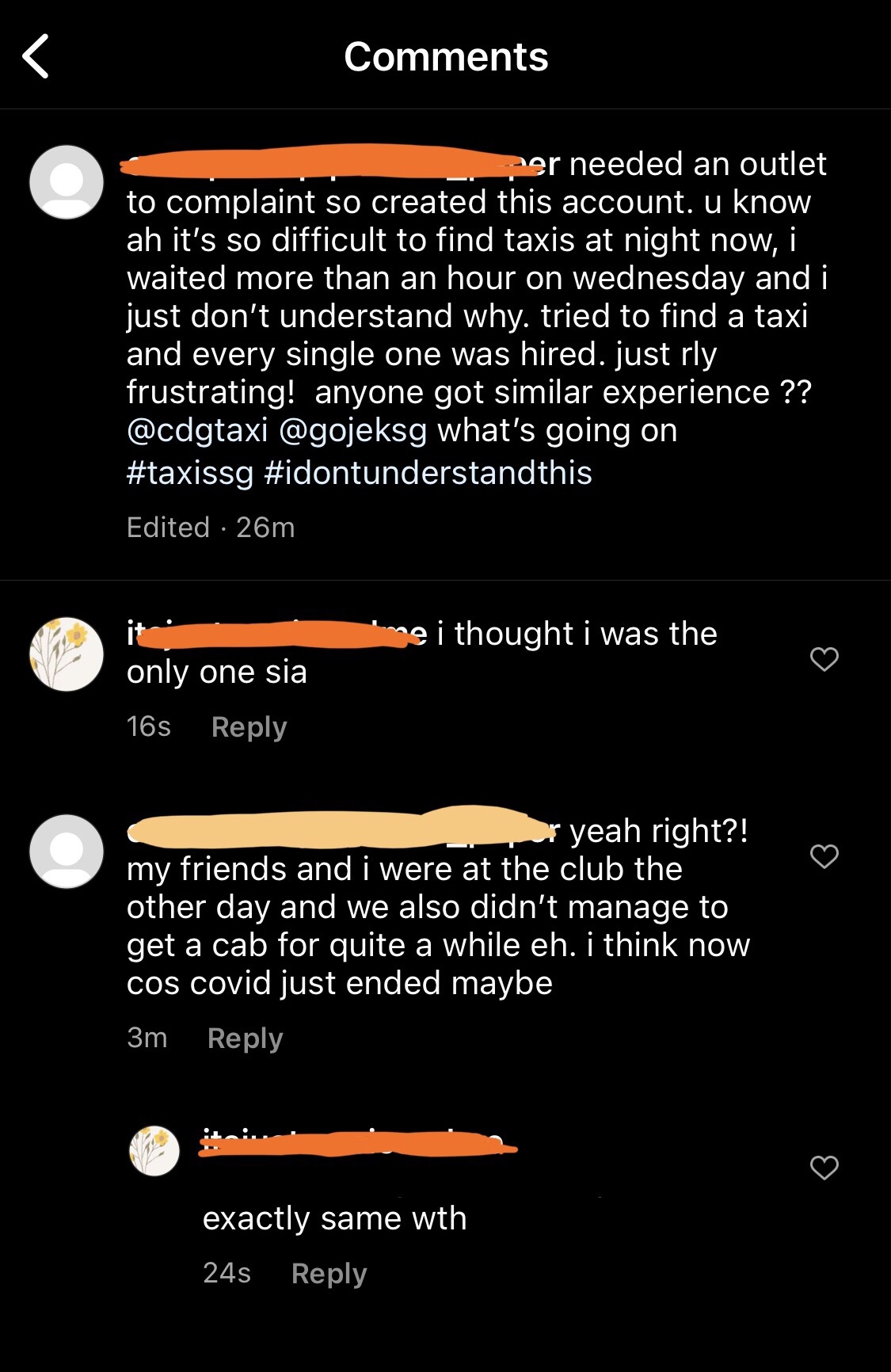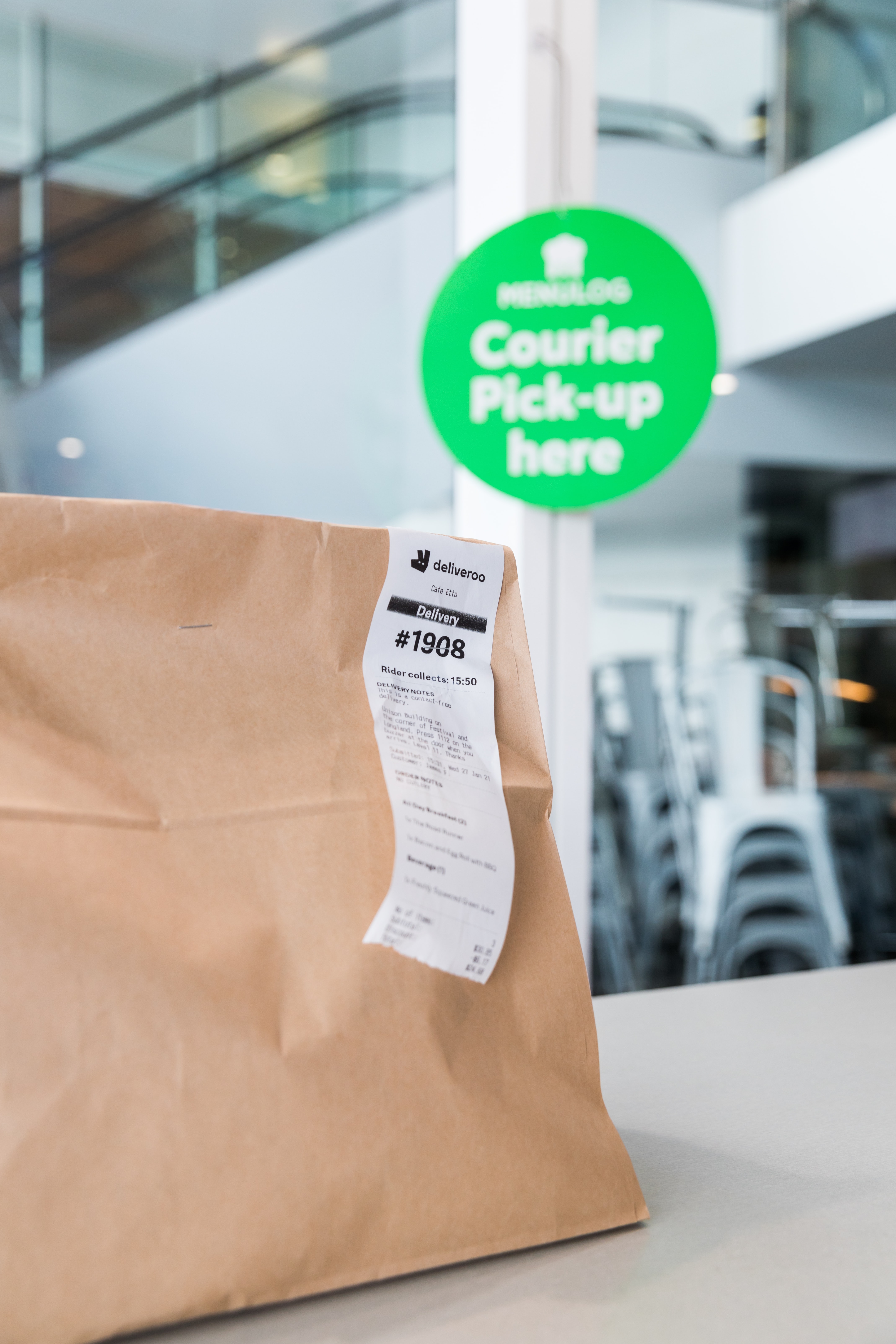Follow us on Telegram for the latest updates: https://t.me/mothershipsg
It’s 3 am on a Friday, an evening of partying just ended and you are making your way out of a club.
Upon arrival at the taxi stand, a long maze of people stretches towards the front, leaving you frustrated as you wait in the back of the line. You try booking a private hire car, only to be disappointed – the wait is just as long.
 Screenshot via Instagram comments section
Screenshot via Instagram comments section
This is a scenario that has been recurring lately, with many passengers finding it difficult to hail a cab past midnight.
Mothership spoke with some drivers and ride-hailing companies to find out why this might be the case.
A sudden uptick in demand coupled with a lack of drivers
As life returns to greater normalcy following the relaxation of most of the Covid-19 restrictions late last month, taxi and private hire companies are experiencing a rapid resurgence of demand for their services.
In a statement to Mothership, a Grab spokesperson said that they are “seeing more passengers booking rides on the Grab app”.
Tammy Tan, the Group Chief Branding and Communications Officer of ComfortDelGro, also indicated that the company expects the “demand (for their services) to continue to climb in the weeks ahead”.
However, the number of taxis and private hire vehicles (PHV) on the road has fallen compared to pre-pandemic levels, contributing to the shortage.
According to statistics provided by the Land Transport Authority, the number of ComfortDelGro taxis plummeted from 8,031 to 6,576 between December 2019 and March 2022, down 18.1 per cent.
Grab has also observed a decline in the number of driving partners using its platform in the last two years as a result of a "lack of demand" for rides, said the company’s spokesperson.
The Covid-19 restrictions curtailed demand for taxis and private hire vehicles as many office-goers were working from home, which reduced the need for daily commutes. Local borders were also closed, resulting in fewer local tourists. Since the taxi and private hire industry is strongly correlated with the tourism industry, the lack of tourists consequently took a toll on the passenger demand.
Speaking to private hire drivers, it seems that many have since left the industry in search of other career opportunities and better job prospects.
Here are some of the most common explanations for the shrinking driver pool.
An influx and exodus of drivers throughout the Covid-19 pandemic
In 2020, Singapore saw the highest number of layoffs in ten years with more than 26,000 workers retrenched, as the country suffered one of its worst economic recessions due to the Covid-19 pandemic.
According to Loh Tok Kwang, a private hire driver with Grab, these retrenched workers were attracted to the taxi and private hire industry since they could receive immediate payouts for their services, and the industry was flooded with new employees at the hike of the pandemic.
With the rebound of our economy and the reopening of our borders, however, Loh notes that many of these newly hired drivers have since returned to their original careers.
Furthermore, many drivers who previously worked in the taxi and private hire field have reportedly left the industry as they struggled to make ends meet with low wages and poor business during the pandemic.
Loh said:
“Some have become security guards, and others have started their own businesses.
So, that is why the taxi industry is currently severely understaffed and it’s difficult to find a cab at night or during the peak hours [...] I know that many customers have had to wait for at least one to two hours for a cab, especially downtown.”
According to Loh, some drivers even had to resort to borrowing from the bank to tide them over and support their families.
For Loh, his earnings dwindled by almost half during the pandemic, and it was difficult to recover from the losses.
“Before Covid-19, I was earning roughly S$46,000 in a year, but my earnings during the last two years were much lower, ranging from S$26,000 to S$35,000 per year”.
To supplement his income, Loh took on additional responsibilities such as becoming a food delivery agent on top of his private hire duties. He added that during the pandemic, the government had permitted private hire drivers to conduct food deliveries at specific times of the day, to alleviate their financial woes.
 Image by Socialcut via Unsplash
Image by Socialcut via Unsplash
“I had to (carry out food deliveries) because taxi fares were very low and there was hardly any demand for our ride-hailing services,” he said.
Long hours but earnings are still lower than before
Despite the relaxation of the Covid-19 measures and a surge in ridership, many drivers are still feeling the pinch as their jobs are not as lucrative as they were previously, even after putting in long hours on an almost daily basis.
Yong, a Grab driver who declined to give his full name, affirmed this.
He admitted that even though he works long hours from 7 am to 7 pm daily, he is "barely scraping by" with his current income.
Although passenger demand has grown with the easing of the Covid-19 measures, Yong now faces a different type of challenge, given the increased amount of traffic and cars on the road.
 Image by Jeyakumaran Mayooresan via Unsplash
Image by Jeyakumaran Mayooresan via Unsplash
“It’s been easier to get passengers, but the traffic has also been getting more heavy generally, everywhere…in some ways, we do take lesser customers now because in the past there were not as many cars on the road.
In one hour, I could take four to five passengers. But right now like today, I can only take one passenger in one hour.”
In addition to heavier traffic, higher ERP charges, petrol prices, and car rental fees have also battered the earnings of both taxi drivers and private hire drivers.
As an example, the government announced a S$1 increase in ERP charges along the AYE and the CTE in early February this year, citing heavy traffic congestion along these expressways.
Furthermore, local petrol prices have been skyrocketing since the start of the year, with pump prices rising to record-high levels, amidst the pandemic and the Russo-Ukraine war.
Loh echoed Yong's concerns, emphasising that even though his earnings have increased since the restrictions were lifted, he is still earning "much less" than he used to before the pandemic, despite working 12 hours a day.
He revealed that his monthly income has decreased by an average of S$1,000 since the pandemic, noting that some drivers have since left the industry in pursuit of other careers.
He stressed that drivers will have to “work very hard to support their families” if they intend to continue in this field.
“If I were younger, I would also choose a different career path and pursue a better-paying job that provides CPF contributions,” said Loh who is in his late 50s.
Yong, on the other hand, who is in his 50s and has been a private hire driver with Grab for the past 3 years, disclosed that he is actively seeking a full-time job that commands a higher salary.
Drivers’ routines have changed since the pandemic
There are other considerations as well.
As nightlife was non-existent throughout the pandemic with the prohibition of live performances and the closing of nightclubs for health and safety reasons, drivers were forced to rethink their schedules and shift timings accordingly to better cater to the population’s needs.
For instance, drivers who routinely drove during the wee hours of the morning switched to driving during the day, foregoing their usual night shifts.
Yong, for one, used to work the night shift until 4 am. However, he now works from 7am to 7 pm. According to Yong, he did not see the point in working the night shift during the pandemic since most people were not out after midnight.
He indicated that although he might consider working the night shift again with the easing of the Covid-19 restrictions, he currently still plans to spend more quality time with his family.
“Now I try to set a daily target, as long as I hit S$200 nett before dinner, I don’t think there is a necessity to go out at night. I just want to spend more time at home, chill out with the kids now, after the pandemic”, he said.
Avoiding nightclub hotspots after midnight
Despite the return of nightlife, which has increased passenger demand in the wee hours, some drivers remain reluctant to pick up clients at popular drinking spots after dark.
 Image by Aaron Paul via Unsplash
Image by Aaron Paul via Unsplash
“To be honest, I will try to avoid places where people commonly gather to drink alcohol like Clarke Quay and Boat Quay. I tend to avoid clubbing areas late at night because I think that it can be a bit dangerous,” Loh stated.
Furthermore, Yong explained that he has heard horror stories about the customers at these locations and so has reservations about picking up clients late at night at such establishments.
“I’m also fearful because I have other Grab driver friends who have shared with me that customers will mess up their car, like vomiting and all that”.
As passenger demand continues to grow and drivers are in short supply, private hire companies have introduced various initiatives to handle the surge in demand.
Grab, for instance, has put in place incentive programmes to encourage existing driver-partners to drive during peak hours and attract new driver-partners through a driver referral programme.
The company reassures passengers that they will “continue to monitor and adapt accordingly as the situation remains fluid with Singaporeans adjusting to the lifting of the Covid-related measures”.
Follow and listen to our podcast here
Top images via Claire Teo and Instagram comments section.
If you like what you read, follow us on Facebook, Instagram, Twitter and Telegram to get the latest updates.
